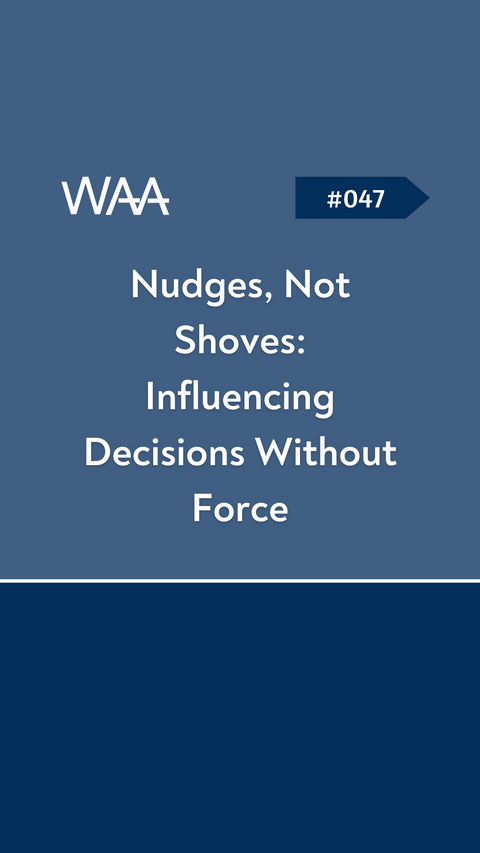
#047 Nudges, Not Shoves: Influencing Decisions Without Force
Introduction:
In the world of branding, storytelling, and marketing, the goal is to influence the decisions of consumers and drive their engagement with a brand. However, the days of forceful and aggressive tactics are fading away. Instead, businesses are adopting a more subtle and persuasive approach known as "nudges." By employing strategic nudges, businesses can guide consumer behavior, encourage positive decision-making, and build strong brand connections. In this blog post, we will explore the concept of nudges, their effectiveness in influencing decisions, and strategies for implementing them in branding, storytelling, and marketing efforts.
What are Nudges?
Nudges are subtle cues or prompts designed to influence decision-making without relying on force or coercion. They provide gentle encouragement or reminders that steer individuals towards a desired choice or behavior. Nudges operate on the premise of making certain options more salient, convenient, or appealing, effectively shaping decisions without removing freedom of choice.
The Power of Storytelling and Nudges:
Storytelling is a potent tool for brands to captivate their audience and convey their message. When paired with nudges, storytelling becomes an even more influential force. By strategically integrating nudges into brand narratives, businesses can gently guide consumers towards desired outcomes, while preserving the authenticity and emotional connection of the story. Nudges in storytelling can be as simple as highlighting the benefits of a particular product or service at key moments, subtly influencing the decision-making process.
Effective Nudging Strategies in Marketing:
-
Choice Architecture:
- Design the customer journey and user experience to nudge consumers towards desired actions.
- Simplify the decision-making process by offering fewer options and clearly highlighting the most favorable choice.
- Utilize visual cues, such as color or layout, to direct attention towards preferred choices or actions.
-
Social Proof:
- Leverage the power of social influence by showcasing testimonials, reviews, or user-generated content.
- Highlight the popularity or positive feedback associated with a particular product or service to nudge consumers towards a favorable decision.
-
Default Options:
- Set default options that align with desired outcomes, while still allowing customers to make an alternative choice if they wish.
- By presenting a default option as the starting point, businesses can influence decision-making by making it more convenient or appealing.
-
Framing:
- Shape perceptions and influence decisions by presenting information in a particular context or frame.
- Emphasize the positive aspects or benefits of a product or service, framing it as a solution to customer needs or desires.
Building Brand Connections through Nudges:
-
Consistency and Trust:
- Develop consistent brand messaging and values to build trust and familiarity.
- Use nudges to reinforce core brand messages and align with customer expectations, fostering loyalty and connection.
-
Personalization:
- Tailor nudges to individual customer preferences, needs, and behaviors.
- Leverage customer data and insights to create personalized experiences that resonate with customers on a deeper level.
-
Emotional Engagement:
- Use nudges to trigger emotions and create emotional connections with the brand.
- Craft storytelling that invokes positive emotions and aligns with customer aspirations or desires, subtly nudging consumers towards brand affiliation and loyalty.
Conclusion:
Influence is a delicate art in the branding, storytelling, and marketing world. The days of forceful strategies are being replaced by the more subtle and persuasive approach of nudges. By employing nudges effectively, businesses can guide consumer decisions without resorting to forceful tactics. By integrating nudges into storytelling and marketing efforts, brands can gently steer consumers towards desired actions, build strong connections, and foster brand loyalty. Nudges, not shoves, provide a more respectful and effective pathway for businesses to create positive change and influence decisions in the ever-evolving landscape of branding and marketing.
